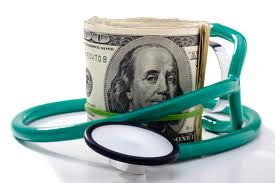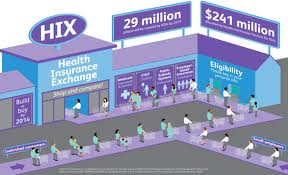Summary: Subsidies – Income Alone Does Not Guarantee Assistance, especially for the 18-34 age group.
 With the debacle surrounding the healthcare exchanges, specifically www.healthcare.gov, at least the subsidies are working, right? Offer subsidies…and they will sign up…or will they? Subsidies – Income Alone Does Not Guarantee Assistance. Evidently, the subsidies designed to offer assistance to those in certain income levels aren’t so straight-forward either. Issues have recently arisen indicating that subsidies may not be paid as initially intended.
With the debacle surrounding the healthcare exchanges, specifically www.healthcare.gov, at least the subsidies are working, right? Offer subsidies…and they will sign up…or will they? Subsidies – Income Alone Does Not Guarantee Assistance. Evidently, the subsidies designed to offer assistance to those in certain income levels aren’t so straight-forward either. Issues have recently arisen indicating that subsidies may not be paid as initially intended.
Medicaid expansion states – subsidies are supposed to be paid for those earning between 100% and 400% of the poverty level
Non-Medicaid expansion states – subsidies are supposed to be paid for those earning between 138% and 400% of the poverty level.
The key word for these two scenarios is “supposed to”. In reality, younger people are less likely to receive a subsidy such as the group single without children between the ages of 18 and 34 below the 400% of the poverty level. This may cause this group to think twice about taking the penalty or purchasing insurance. This younger group is important to the enrollment in insurance as they tend to be healthier and are needed to offset the costs of those who are older and/or have more serious health conditions.
Why is this? Well, it has to do with the formulas used to calculate the subsidies. Part of the equation is applicable percentage which is the percentage of your income that you must pay toward your insurance before you qualify for a premium subsidy on the exchange. The applicable percentage is a sliding scale beginning at 2% if you earn around the 138% of poverty level and increases incrementally up to the 400% of poverty level. At 400%, the applicable percentage is currently set at 9.5%. These subsidies are calculated on the second-lowest cost metal plan – the silver. The issue is that premiums are partially determined by age while the applicable percentage is a set figure in which age is not a factor.
| Income Level | Premium as a percentage of income |
| Up to 133% | 2% of income |
| 133% to 150% | 3-4% of income |
| 150 to 200% | 4-6.3% of income |
| 200 to 250% | 6.3-8.05% of income |
| 250 to 300% | 8.05-9.5% of income |
| 300 to 400% | 9.5% of income |
Example:
Single male 21-24 years old who is making 257% of the poverty level and has no children. Estimated premium is $2,439 and the offset applicable percentage calculates out to $2,439, so guess what, no subsidy would be issued.
percentage calculates out to $2,439, so guess what, no subsidy would be issued.
Same scenario but the single male is 64 years old. Premium is estimated as $7,316 but the applicable percentage calculation is the same as above $2,439. The 64 year old would receive a subsidy for the difference or $4,877.
This actually means that when all is said and done for this particular example, both individuals would pay the same premium even though there is a substantial difference in age.
Without the subsidy, there is a good chance that the 21-24 year old will not be able to afford insurance and may therefore opt for the penalty. Taking the healthy younger population out of the mix will drive up insurance rates for everyone else. This is a huge fear at this point which is why every effort is being made to have the young, healthy individuals covered through insurance.
On the flip side, the most generous subsidies begin to kick in around age 50, so this group is probably very likely to elect insurance coverage. This group also begins to have higher medical costs and more severe issues, which will drive healthcare costs even higher. This is sometimes referred to as the death spiral in which costs can spiral out of control.
So, the moral of the story is just because you qualify for a subsidy due solely to income level doesn’t mean you will actually receive one. The younger you are (18-34) and the closer you are to the 400% of poverty level, the less likely you are to receive a subsidy. The older you are (over 50), the more likely you will receive a subsidy as you approach earnings of 400% of the poverty level.
